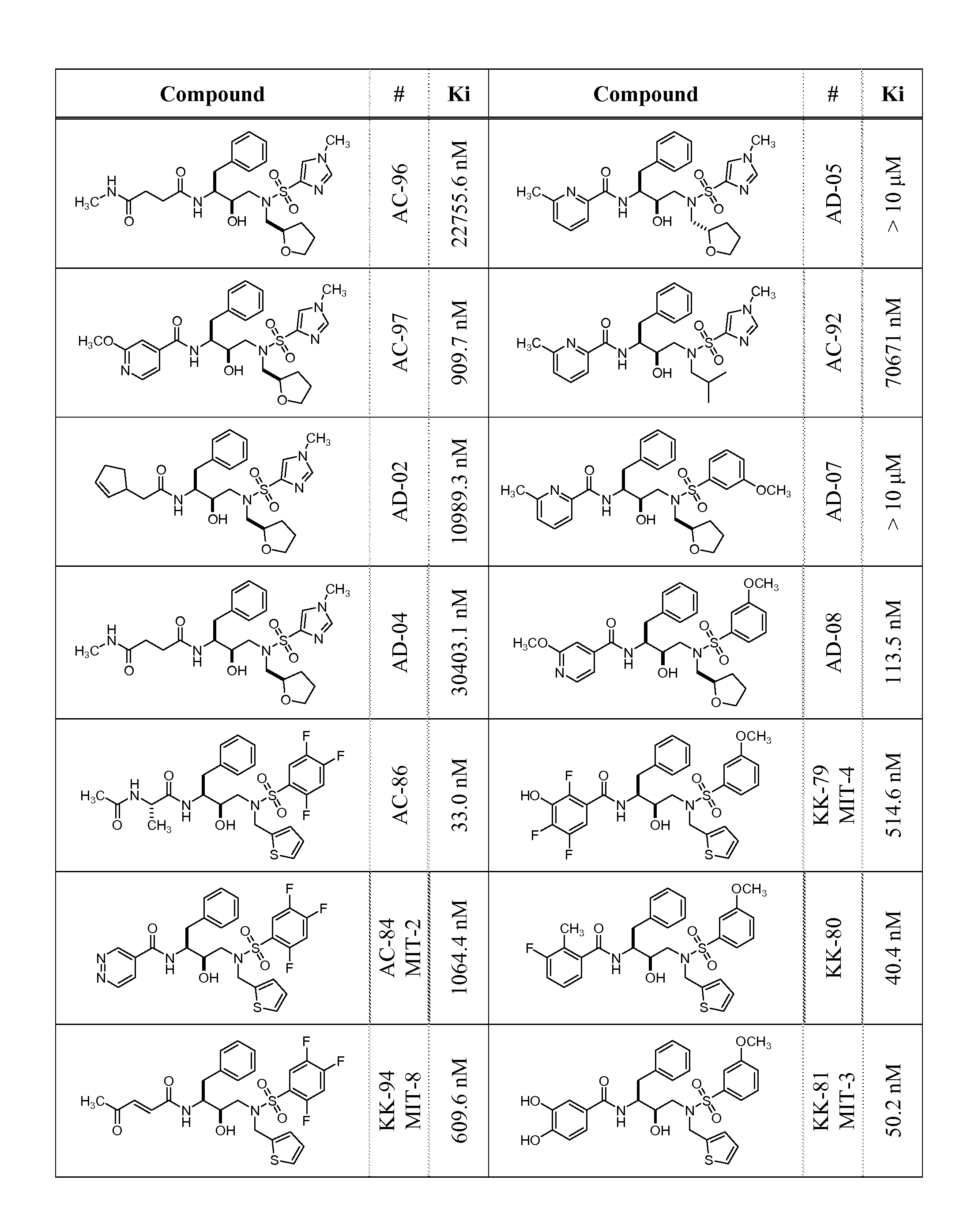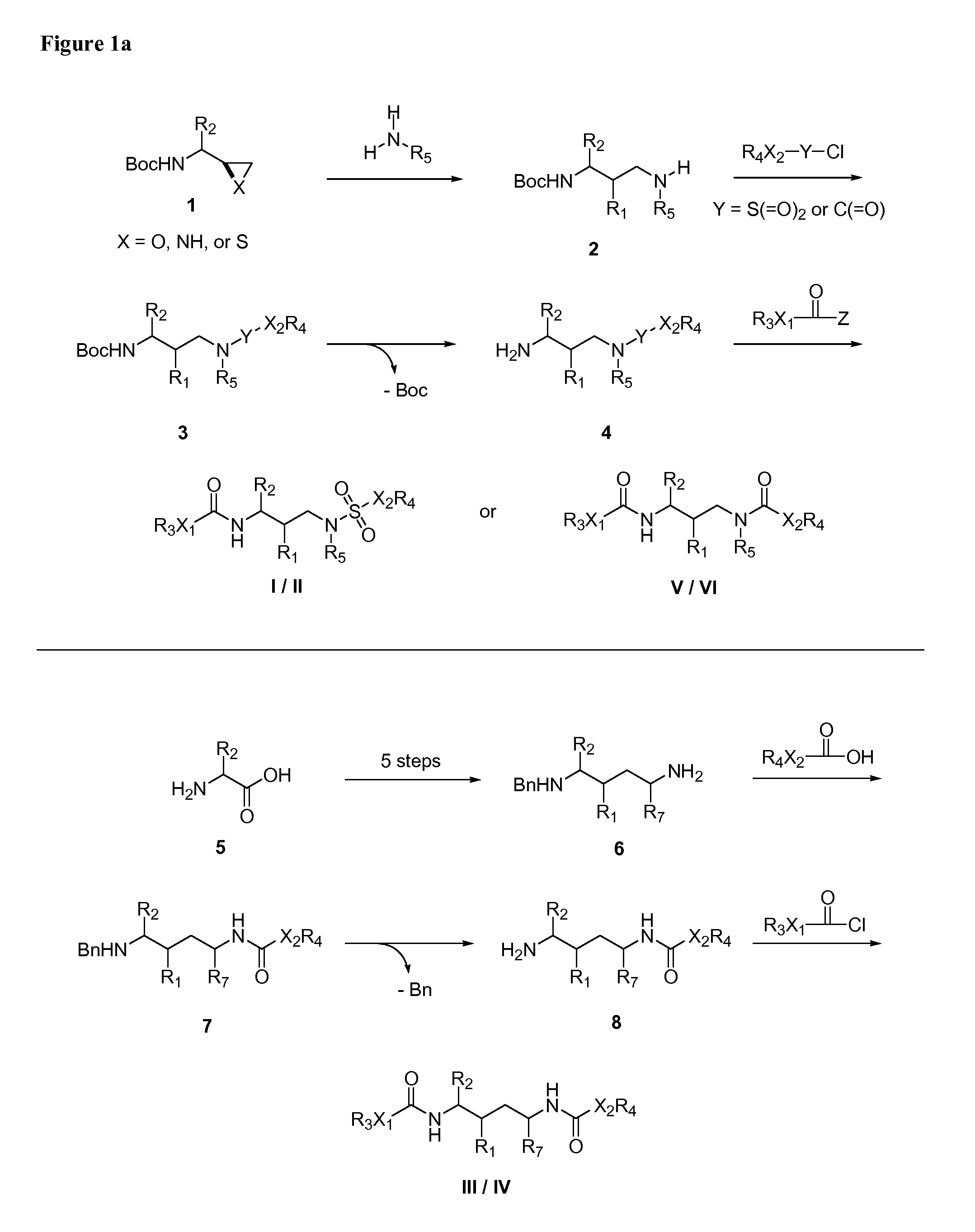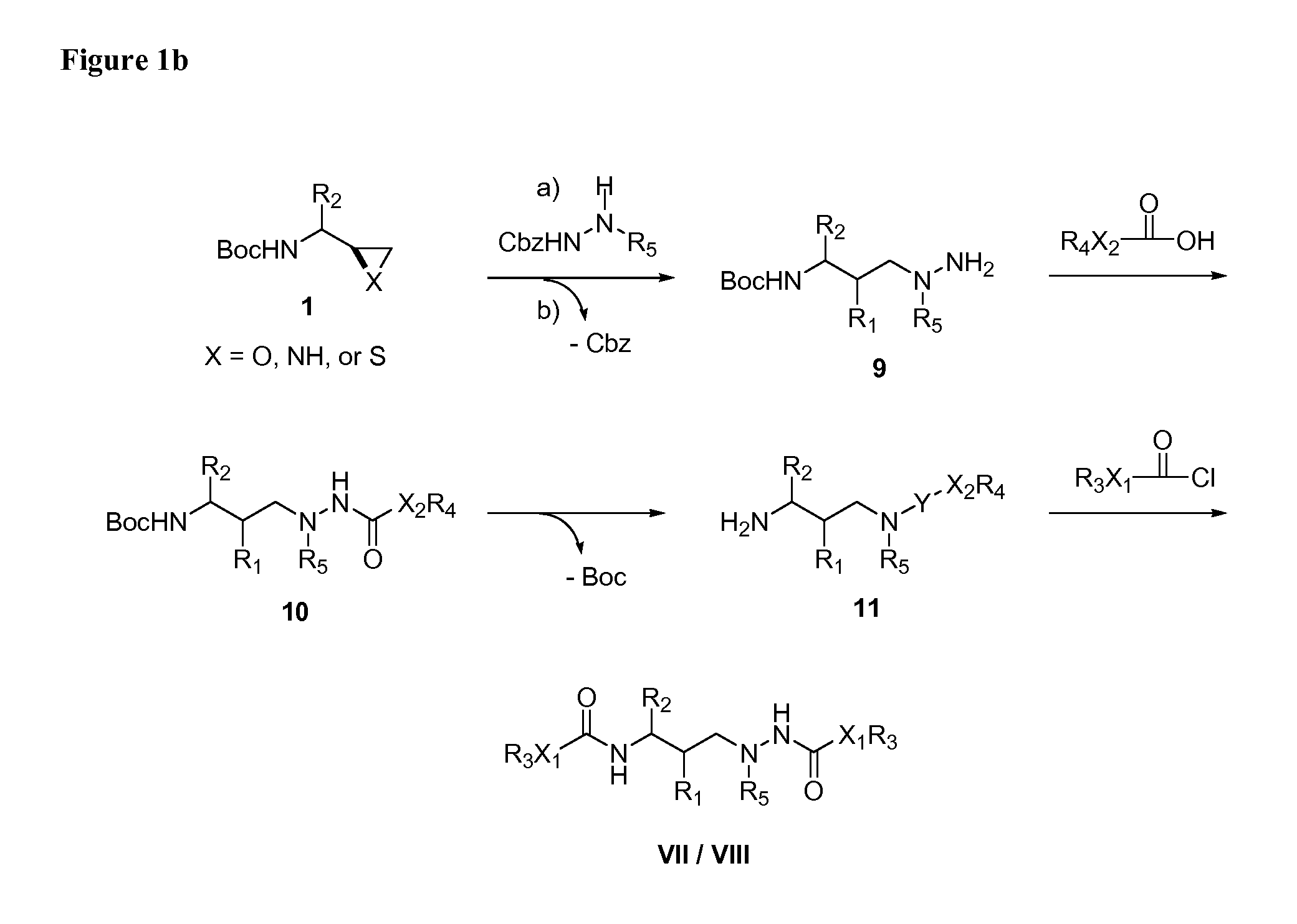HIV-1 Protease Inhibitors
a protease inhibitor and hiv-1 technology, applied in the field of hiv-1 protease inhibitors, can solve the problems of mdr) mutants, affecting the efficacy of these drugs, and sometimes being associated with the development of irreversible hiv resistance, and not being able to develop different classes of therapeutic agents
- Summary
- Abstract
- Description
- Claims
- Application Information
AI Technical Summary
Benefits of technology
Problems solved by technology
Method used
Image
Examples
example 1
General Procedure for the CBZ Protection of Substituted Anilines
[0802]Solid NaHCO3 (32.65 g, 388.5 mmols) was added to an ice-cooled solution of aniline derivative (185 mmols) in acetone-water mixture (2:1) (300 mL) followed by the slow addition of benzyl chloroformate (27 mL, 190 mmols). The resulting slurry was warmed to ambient temperature and stirred overnight. Reaction mixture was poured onto ice and the resulting precipitate was filtered, washed with water and dried. Product was purified by recrystallization from a mixture of hexanes and ethylacetate to provide the pure product as crystalline solid. Compounds 4a-g were prepared following this general procedure.
example 2
General Procedure for the Synthesis of 5-(Hydroxymethyl)-Oxazolidinones 7 and 8
[0803]A solution of CBZ protected aniline derivative 4 (34.7 mmols) in dry THF (150 mL) was cooled to −78° C. under dry N2 atmosphere. A solution of n-BuLi (1.6 M in hexanes; 25 mL, 40 mmols) was slowly added keeping the temperature below −70° C. After stirring the reaction mixture at −78° C. for 45 minutes, a solution of chiral glycidyl butyrate (5 g, 34.7 mmols) in dry THF was slowly added. The resulting mixture was stirred at −78° C. for 2 hours and then slowly warmed to room temperature and stirred overnight. Reaction was quenched by the addition of saturated aqueous NH4Cl solution. Ethyl acetate and water were added and layers separated. The aqueous layer was further extracted with ethyl acetate (3 times). Combined organic extract was washed with saturated aqueous NaCl solution, dried (Na2SO4), filtered and evaporated to yield a pale yellow solid. This solid was triturated with a mixture of chlorofor...
example 3
General Procedure for the Synthesis of Phenylloxazolidinone-5-Carboxylic Acids 9 and 10
[0805]To an ice-cooled solution of NaIO4 (35 mmols) in water (75 mL) was added a solution of the alcohol 7 or 8 (10 mmols) in a mixture of CH3CN and CCl4 (1:1) (100 mL). Solid RuCl3.H2O (0.5 mmol) was added and the reaction mixture was stirred at 0° C. for 30 minutes, warmed to room temperature and stirred for 4-6 hours. Reaction was quenched by adding CH2Cl2 and layers were separated. The aqueous layer was further extracted with CH2Cl2, combined organic extract was dried (Na2SO4) and evaporated to provide a gummy solid. Crude product was purified by column chromatography on silica gel using a mixture of 25% CH3CN in CH2Cl2+1% HCO2H as eluent. This method provided the desired phenyloxazolidine-S-carboxylic acids as solids in excellent yields. The following compounds were prepared by this general procedure:
[0806](R)-2-Oxo-3-phenyloxazolidine-S-carboxylic acid (9a). 1H NMR (400 MHz, CDCl3) δ 7.48 (m...
PUM
 Login to View More
Login to View More Abstract
Description
Claims
Application Information
 Login to View More
Login to View More - R&D
- Intellectual Property
- Life Sciences
- Materials
- Tech Scout
- Unparalleled Data Quality
- Higher Quality Content
- 60% Fewer Hallucinations
Browse by: Latest US Patents, China's latest patents, Technical Efficacy Thesaurus, Application Domain, Technology Topic, Popular Technical Reports.
© 2025 PatSnap. All rights reserved.Legal|Privacy policy|Modern Slavery Act Transparency Statement|Sitemap|About US| Contact US: help@patsnap.com



